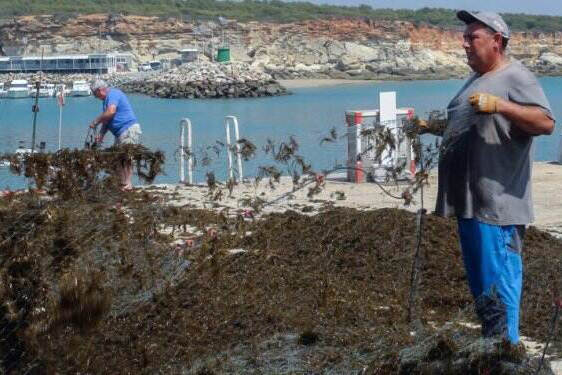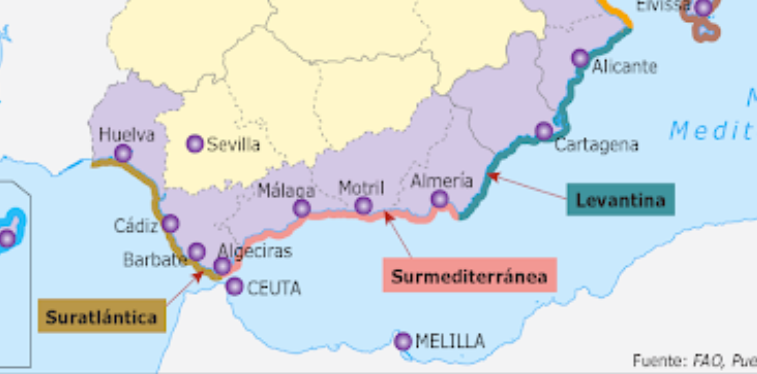Spain: An invasive algae is threatening the Strait of Gibraltar’s fishing grounds
Returning to port with tons of algae in their trammel nets, with hardly any fish, has become a common drama for the men fishing in Spain's Southern coast. The same “catastrophe” is also threatening the marine biodiversity of the area and piling up on beaches.

These fishermen are facing a new “enemy”, a brown-colored algae called Rugulopteris okamurae, an invasive species that has ruined part of the fishing grounds in the province of Cádiz, and on the other side of the strait, of Málaga as well. Fishermen associations estimate that trammel net ships have lost almost 100% of their catches, while trawlers have lost half.

Some fishing ports of Southern Spain
This algae already affects a large area of the fishing grounds from the Bay of Algeciras to Conil de la Frontera and continues to spread without any action having been taken so far. “This is a disaster, we are working for nothing”, a fisherman says, who after working all night returns to port with four tons of algae entangled between his nets. “It is in a very active state, its growth may slow down as temperatures start to drop ”, María Altamirano, President of the Spanish Phycological Society, explains.
Prof. Altaminaro was the one who, in 2016, after receiving some samples from the Spain’s exclave city of Ceuta in North Africa, identified it as Rugulopteris okamurae. It is a native algae to the warm waters near Japan, China and Korea, which outside the Pacific has only been detected in a French coastal lake.
The scientific community is also alarmed by the “meteoric and completely unprecedented” growth of the algae, a researcher at the Marine Biology Laboratory at the University of Sevilla, says. “We have not found any precedent of a bioinvasion that has been so explosive”.
Hypothesis on its origin
The current hypothesis is that the algae reached the Strait of Gibraltar in the ballast waters of a merchant ship from Asia and were dumped uncontrollably. “I don’t believe it”, the President of the fishermen’s association “Bahía de Algeciras “says. “For me it is a matter of water temperature, which is no longer as it was twenty years ago”, he adds.
The massive presence of the algae has transformed the habitat for fish species that had to move to survive. The beltfish is an example. If, for many years, “between 175 y 200 tons per year” were caught in the Conil area, so far this year, “149 kilos” have been caught. “That is the reality, right now the 90% reduction of that species, from Algeciras to Conil”, the manager of an artisanal fisheries OP declares.
The Invasive Alien Species (IAS) catalogue
The Ministry for Ecological Transition has announced that steps have already been taken to include this alga species in the IAS Spanish catalogue by means of an urgency procedure, a basic requirement towards activating protocols to prevent the seaweed expansion.
Several sources